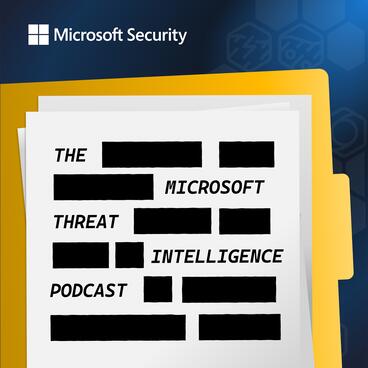The Microsoft Threat Intelligence Podcast
Trailer
Recent Episodes
In this episode of the Microsoft Threat Intelligence Podcast host Sherrod DeGrippo is joined by Technical Program Manager at Microsoft Lynn Miyashita and Principal Research Manager, Andrew Paverd. They discuss the evolution of bug bounty programs into the realm of artificial intelligence, specifically focusing on Microsoft's initiative launched in October 2023. Lynn explains that the AI Bug Bounty incentivizes external security researchers to discover and report vulnerabilities in Microsoft's AI systems, such as Copilot, across various platforms including web browsers and mobile applications. Andrew elaborates on the concept of a "bug bar," which sets the criteria for vulnerabilities eligible for the program. They emphasize the importance of identifying security issues that could arise uniquely from AI systems, such as prompt injection vulnerabilities. The discussion highlights Microsoft's structured approach to handling reported vulnerabilities through their Security Response Center, emphasizing quick mitigation and coordination with researchers to ensure timely fixes and public disclosure.
Microsoft Live at the RSA Conference 2024
In this episode of the Microsoft Threat Intelligence Podcast recorded at the RSA Conference in San Francisco, host Sherrod DeGrippo engages with a diverse group of cybersecurity experts. David Weston, VP of Operating System Security at Microsoft, discusses the evolution of Windows security and the role of AI. Jamie Williams from MITRE shares insights on the importance of product functionality in cybersecurity. Emma Stewart, Chief Power Grid Scientist at Idaho National Lab, talks about securing the digital transition of the power grid. Joe Slowik from MITRE emphasizes the importance of threat intelligence and integrating cybercrime entities into their attack framework. Lindsey O'Donnell, executive editor of Decipher, highlights AI's crucial role in cybersecurity and finally, Todd Pauley, deputy CISO of the Texas Education Agency, discusses the challenges faced by small school districts in Texas.
Mark Russinovich Talks Jailbreaks
On this week's episode of The Microsoft Threat Intelligence Podcast, Sherrod DeGrippo is joined by Mark Russinovich. Mark Russinovich, CTO and Technical Fellow of Microsoft Azure, joins the show to talk about his journey from developing on-prem tools like Sysinternals to working in the cloud with Azure. Sherrod and Mark discuss the evolution of cybersecurity, the role of AI in threat intelligence, and the challenge of jailbreaking AI models. Mark shares his experiences with testing AI models for vulnerabilities, including his discovery of the "Crescendo" and "Masterkey" methods to bypass safety protocols. They also touch on the issue of poisoned training data and its impact on AI reliability, while highlighting the importance of staying ahead in cybersecurity.
Threat Landscape Update on Grandoreiro and Luna Tempest
On this week's episode of The Microsoft Threat Intelligence Podcast, Sherrod DeGrippo is joined by two of MSTIC’s finest analysts. They discuss recent trends in financially motivated cyber threats observed by Microsoft, focusing particularly on two cases: the Grandoreiro banking Trojan and the Luna Tempest crimeware actor. The Grandoreiro Trojan, active since 2017, has expanded globally beyond its initial Latin American focus, now targeting countries like the U.S. and the UK. This Trojan typically starts with phishing emails to steal financial information. Despite efforts to disrupt this activity, new clusters have emerged. The discussion also covers Luna Tempest, a U.S.- and UK-based extortion group targeting startups and smaller companies, particularly in sectors like insurance, FinTech, and biotech, seeking high payouts by threatening to release sensitive data.
Andrew Morris and Lauren Proehl on Infosec
On this week's episode of The Microsoft Threat Intelligence Podcast, Sherrod DeGrippo is joined by Andrew Morris, Founder & Chief Architect at GreyNoise and Lauren Proehl, Director of Global Cyber Defense at Marsh McLennan. Lauren Proehl is an experienced cybersecurity leader who has helped defend against threat actors in Fortune 500 networks and has managed multiple divisions focused in defensive security and specializes in innovative cyber defense. GreyNoise operates a huge sensor network across the internet that collects primary sourced data on which vulnerabilities attackers are exploiting, when they start, and from where. Sherrod, Lauren, and Andrew discuss the effectiveness of banning ransomware payments, the importance of focusing on backup and disaster recovery strategies, the necessity of investing in basic security measures like endpoint detection and response, multi-factor authentication, and log storage.


